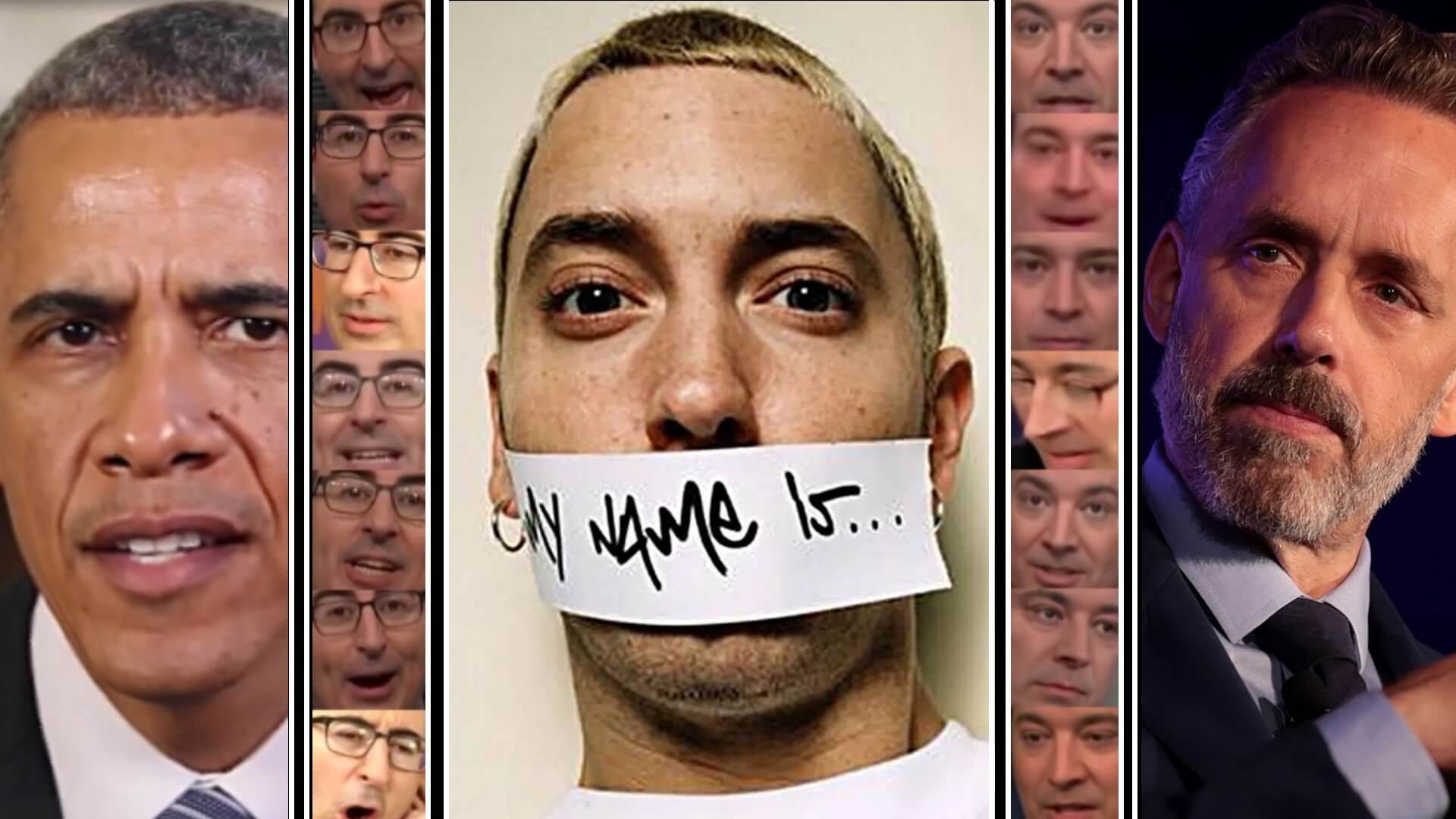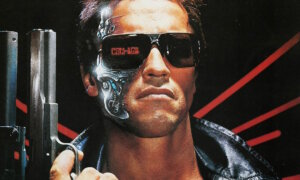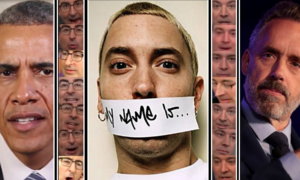For the last four years, deepfake videos have challenged reality, turning empirical evidence into an artifact of the past. Can you really trust what you see online?
The technology soon spread out on sites like Reddit, with mainstream media featuring headlines ever more alarming – we chronicled the major happenings here.
No matter what you feel about deepfakes, this tech is here to stay – and these are the best deepfake videos you should know about. From the funny to the alarming or downright unsettling, we compiled the best deepfake videos through the years and chronicled the rise of this technology.
Last week, Internet attackers created a deepfake hologram of a senior representative of the cryptocurrency trading business Binance. The chief communication officer at Binance revealed that a group of hackers made use of video footage of his interviews and media appearances and created his AI hologram. He said that at least four groups reached out to him to say they’d had a call with someone using his appearance.
“Our hope is to prevent other projects from falling prey to these types of scams. There is no way for us to know the extent of this scam because it was perpetrated completely outside our ecosystem on platforms like Telegram and LinkedIn.” Read more here.
Why is it called deepfake?
Deepfakes take their name from the “deep learning” AI technique and the word “fake”, so this term means fake images created through deep learning.
Of course, photo manipulation is nothing new, but the academics behind deepfakes brought the concept to videos – and changed the world as we know it.
How are deepfakes created?
An AI technique that combines existing images and videos to create new images and videos, usually clones indistinguishable from reality, deepfakes came to prominence in 2017 with a viral video of former US President Obama.
As we said in our previous report on this tech, the main techniques used to make deepfakes are based on deep learning, training generative neural network architectures or using generative adversarial networks (GANs).
In 2021, Chris Ume created a fake Tom Cruise, using AI and facial-mapping technology to create a series of deepfake videos and released them on TikTok and the videos became viral quickly.
The first notorious example, the original Obama deepfake, demonstrated a very advanced lip syncing technology where the subjects say whatever the computer tells them to say, without needing to be in the studio and record the voice.
This viral video came after other computer scientists played with images of Donald Trump and Vladimir Putin but, back then, the tech was still considered innocent.

In that project, the researchers envisioned their tech being used for “better foreign language dubbing in movies and even accurate live video chat translations.”
Fast forward a couple of years and the US president is saying whatever is fed into the program, we have deepfake pornography, deepfake voice scams and deepfake apps anyone could use to become their favorite actor. In a very short time, this tech took over the internet.
The best Deepfake apps
Indeed, you can make your own deepfakes with just a couple of clicks or taps.
The Zao deepfake app lets you upload an image of your face and turns you into your favorite actor or superhero. While the app was branded more like a face-swap app, the accuracy with which Zao superimposes faces on pre-selected videos is more akin to deepfake technology.
It was the start of the face-swap apps madness and even social media giants jumped on the trend.
First, there were the filter makers of Instagram, who offered premium AR filters to add regular people’s faces into existing videos.
Then, the Snapchat Cameo feature, the first official one from a major social media platform, used deepfake tech to let users add their own faces to different activities and turn the result into a shareable gif.
While these apps were used to create cute, shareable content, the deepfake tech does have a dark side to it.
Privacy experts around the world sounded the alarm on deepfakes and how they could be used to generate fake news. Even actor Jordan Peele took over Barack Obama’s face in a deepfake warning about how this tech could impact the social and political landscape.
However, according to one report, this tech could have a more immediate negative impact on regular Internet users.
According to the The State of Deepfakes study authored by cybersecurity company Deeptrace, the majority of deepfakes floating online are porn deepfakes, and not videos used to support fake news. And the numbers paint a very sketchy picture.
The researchers found a total 14,678 deepfake pornographic videos online. Alarmingly, 96% of them were non-consensual.
“Deepfake pornography accounts for a significant majority of deepfake videos online, even as other forms of non-pornographic deepfakes have gained popularity,” warned the experts, and the broken down numbers look no better.
“Deepfake pornography is a phenomenon that exclusively targets and harms women,” said researchers, who found the content on deepfake pornography websites to have an 100% female content, unlike on YouTube, where women were deepfaked in just 39% of the videos.
According to their report, “all but 1% of the subjects featured in deepfake pornography videos were actresses and musicians working in the entertainment sector”.
The authors chose to not publish the names of women targeted by deepfakes but they did provide a breakdown of the most popular categories.

While the entire world was focused on the dangers of deepfakes on the political scene and the effects of disinformation, this tech was quietly spreading as a destructive social force at the most intimate level.
A report called “The Double Exploitation of Deepfake Porn” focused on revenge porn and IP theft as the more pressing concerns.
First, unsuspecting women are fetishized by the making of a deepfake video, humiliated or subjected to blackmail. Then, the videos used to create those deepfakes are actually the livelihood of sex workers online, who make a living from their original content.
In some cases, deepfake technology has been used as a tool to emotionally manipulate and shame.
In one report, a mother used explicit deepfake photos and videos to kick her daughter’s cheerleading rivals off the team. She combed through her daughter’s social media friends, took their pictures, and then used one of the popular deepfake apps to portray daughter’s colleagues “naked, drinking and smoking”. A new and troubling case of cyberbullying, this incident highlights the need to create tools to identify deepfakes.
Currently, there aren’t any apps to detect deepfakes, at least no apps dedicated to regular Internet users.
There is however a project made by a couple of University of Washington scientists, which aims to help you spot images that are actually computer-generated. WhichFaceIsReal.com puts actual photos of people side by side with deepfakes generated by Nvidia’s AI algorithm StyleGAN, which is able to create almost-perfect portraits of humans.
This exercise can teach you the tell-tale signs of AI-generated portraits, from weird backgrounds to teeth details.
You can also achieve the same results by watching some of the best deepfake videos released so far.
The best deepfake videos
Deepfake Nicolas Cage compilation
Thanks to Reddit, which was one of the first and biggest deepfake communities since the beginning, there is a wealth of Nicolas Cage deepfakes – and each is funnier than the previous one.
Thought this actor had incredible range and a very long IMDB portfolio? That’s nothing compared with what the fake Nic Cage has been up to.
Tom Cruise deepfakes
The same goes for the variety of Tom Cruise deepfakes. In one famous video, the fake Tom Cruise is discussing an encounter with the former Soviet-leader Mikhail Gorbachev. In another, he’s playing golf.
All of them were viral sensations thanks to the @deeptomcruise account on TikTok. They’re created by Belgian visual effects artist Chris Ume, who combined deepfake technology with a professional Tom Cruise impersonator to create some of the most convincing deepfakes yet.
Anthony Bourdain deepfake voice
Then, there’s this impressive use of deepfake technology in documentaries. Director Morgan Neville deepfaked Anthony Bourdain’s voice to create a narration for the Roadrunner: A Film About Anthony Bourdain documentary.
When you hear the late chef saying “You are successful, and I am successful, and I’m wondering: Are you happy?”, it’s actually a computer-generated voice.
Deepfake Jordan Peterson
Deepfake voices are actually among the first applications of deepfake technology and some of the hardest ones to detect from reality.
In 2019, author and academic Jordan Peterson, a controversial figure online, was targeted with this technology by a website that let anyone create a deepfake Jordan Peterson voice.
The neural network called NotJordanPeterson was trained to mimic the voice of Peterson and released online for anyone to use. Anyone could type anything and have the fake Peterson talk out loud, so the project had plenty of potential for misuse and could be arguably categorized as a very damaging form of cyberbullying. He responded by warning that deepfake artists and the misuse of this technology could make it so that we can no longer tell what’s real and what’s not.
In another, cuter project, a Jordan Peterson AI model was taught to sing Lose Yourself by Eminem. Unfortunately, that video was set to private.
Deepfake Eminem
Eminem was also the star of another popular deepfake project, one which took a social stance.
The same group who used AI to create a deepfake Eminem diss for Mark Zuckerberg, called Calamity AI, made a deepfake Eminem rap against the patriarchy, featuring a deepfake Kanye West. Notably, the lyrics were also created by AI. The project used Shortly.AI, a text generator based on the OpenAI GPT-3 project, and produced some pretty hilarious lyrics.
Deepfake The Mandalorian / Luke Skywalker
But if you’re looking for the absolute best deepfake video, it belongs to the Star Wars universe.
With such a large fandom, it makes sense that Star Wars deepfakes would abound but this particular project stands heads and shoulders above all of them.
The Mandalorian Luke Skywalker Deepfake created by a famous YouTuber was so jaw-dropping, LucasFilm actually hired him.
Shamook, the creator of this Lucas Skywalker deepfake, demonstrated the full potential of de-aging technology and made a fake Mark Hamill indistinguishable from the real actor.
Certainly, deepfake technology is capable of transcending the limitations of space and time. It can de-age actors, bring beloved voices back from the dead and turn public personalities into whatever your imagination dreams up. As you’ve seen so far, it’s also a disruptive technology that has been misused time and time again, sometimes with scary consequences.
So, what do you think about this technology? Are you threatened by its implications or amazed by its potential? What types of safeguards or deepfake legislation should be created to distinguish the real from the computer-generated?
Follow TechTheLead on Google News to get the news first.


















